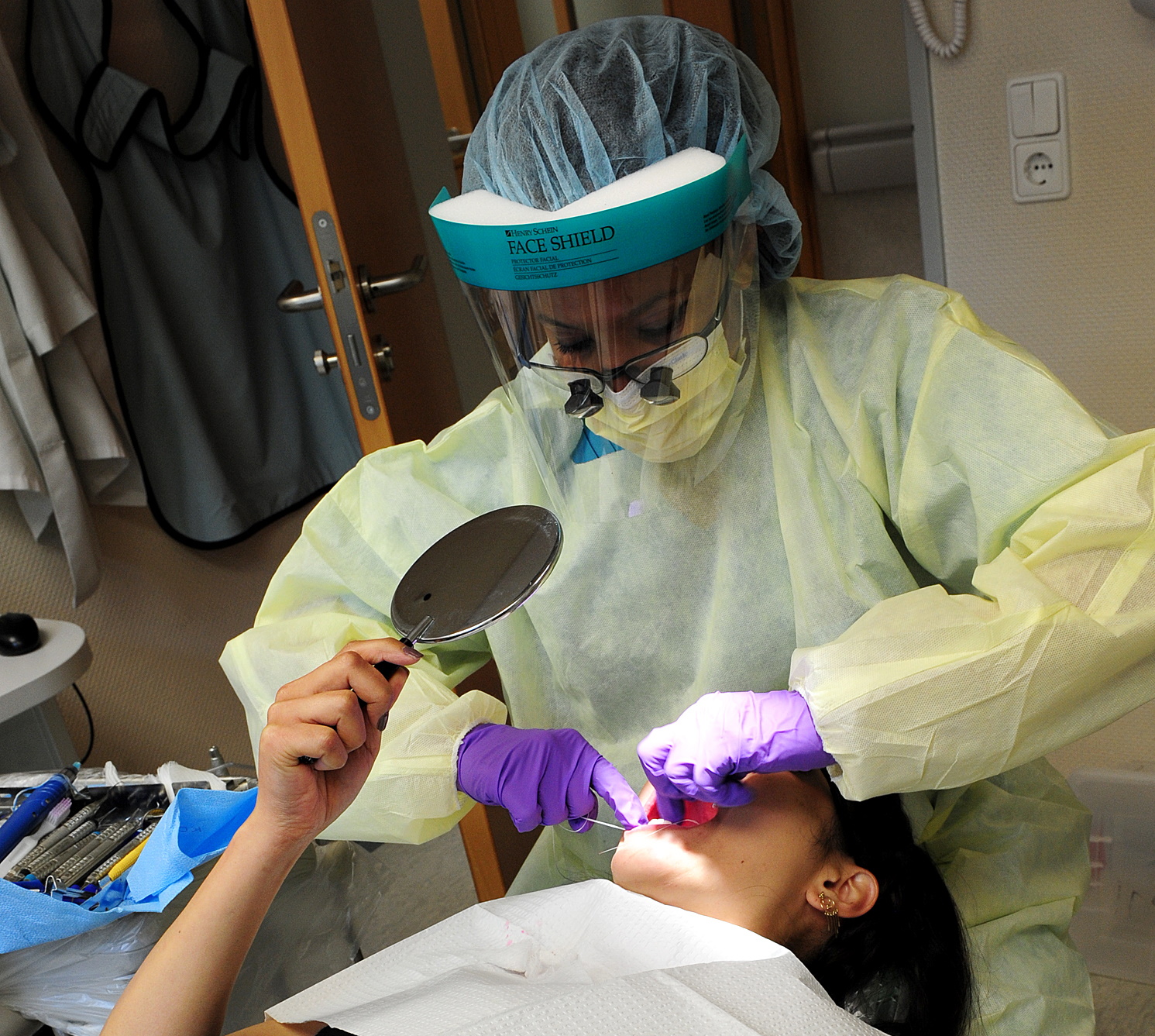At first glance, Invisalign and composite bonding might not seem to be related. Invisalign’s purpose is to straighten teeth, while bonding is usually used to fix imperfections like chips, cracks, or stains. But the two cosmetic dental treatments can work hand-in-hand to create a straighter, more pleasing smile—or in some cases, the two treatments might interfere with one another. Here are the answers to some of the common questions we hear about Invisalign and composite bonding.
What is Invisalign?
Invisalign is a product that straightens teeth without the look of traditional braces. Patients get a series of customized, clear plastic aligners called trays that fit over the top and bottom teeth. They use gentle force to turn and nudge teeth into proper alignment. A big part of Invisalign’s popularity is that the trays are hardly visible and can be removed while eating and during brushing and flossing.
In order to see results, patients need to leave the aligners in for 20 to 22 hours each day for on average, 12 to 18 months. The process costs about $3,000 to $6,000. Invisalign works best for mild or moderate crookedness or crowding. More severe alignment issues like overbites, underbites, and crossbites, might only be helped with regular braces.
What is Composite Bonding?

Composite bonding is the process of applying a resin material to the surface of a tooth. It can fix broken teeth by filling in cracks or shallow chips. It can also be molded to re-contour an irregularly shaped tooth, fill in a gap, or build up a tooth that is too small. Bonding is also used to cover up the front-facing side of teeth with bad stains or other surface flaws. The dentist matches the composite resin to the tooth’s color and sculpts it so the shape looks and feels like the natural tooth should.
The composite bonding procedure is a lot like getting a cavity filled, and can be completed in one dental office visit without the need for anesthetic. The teeth are roughened before the composite is applied, then the resin is hardened using a special blue light or laser. It costs, on average, $300 to $600 per tooth.
Does Invisalign Work On Bonded Teeth?
Invisalign will work just as well to straighten bonded teeth as it will for natural teeth, assuming that the bonding is in place before you start Invisalign treatment.
When bonding is done properly, it’s hard to tell the difference between the bonded tooth and the others. The dentist takes impressions of the teeth that act as molds to make the Invisalign trays. As long as the trays fit the teeth, whether they are natural or bonded, they will do their job.
That said, if you get a bonding treatment during the course of Invisalign—say, after the first or second tray—there is a chance that the bonding will change the shape of some teeth. This might make the trays not fit the way they should. For this reason, we recommend getting bonding before or after treatment with Invisalign, but not during (unless specifically recommended by a dentist).
Invisalign works because it shifts the entire tooth. Bonding only covers a portion of the outside of the tooth. If more than half of the tooth needs to be replaced, the dentist will probably suggest another method such as a crown or an implant to fix it instead of bonding. Likewise, bonding is not an option If there is damage to the root and a root canal procedure is necessary.
Does Invisalign or Bonding Work Better at Closing Gaps?

Even though Invisalign and composite bonding are quite different, gapped teeth are one situation where a patient could have a choice of either one. Invisalign can move teeth closer together to close gaps. Bonding can add a small amount of material to the edges so the space between teeth is narrower.
Which one will work better depends on the nature of the gap. If one tooth is smaller than its neighbor, creating a space, some bonding on the small tooth might fix the issue. If, however, all of the teeth are spaced apart, Invisalign might be the most practical solution to move them all into place at once. Since every mouth is different, a dentist or orthodontist should be consulted about what will work best for a particular situation. The patient can then weigh the pros and cons—and costs to come up with a plan.
Can You Get Teeth Bonded During Invisalign Treatment?
Some mouths can benefit from a combination of Invisalign and composite bonding. For example, a patient may get Invisalign for their crooked teeth. Once they’ve completed the process, they may have a tooth that is now noticeably shorter than the rest. A small amount of composite resin could be added to even it out with the other teeth.
The order that these procedures happen is important. As noted above, Invisalign will work on teeth that are already bonded. And composite bonding can be saved for after Invisalign treatment is done. But getting teeth bonded in the middle of the Invisalign process is a big mistake. It would be very unusual for a dentist to suggest it.
Remember that Invisalign trays are created in a lab, based on the impressions taken of a patient’s teeth at the start of treatment. Invisalign’s success relies on the trays fitting precisely. Even a small amount of bonding will change the shape of a tooth. The result will be ill-fitting aligner trays that could hurt or even move teeth in the wrong way.
Together, Invisalign and composite bonding can create the perfect smile, but the best order to get the procedures needs to be discussed with a dental professional.
Will Invisalign Damage Composite Bonding?

Even though composite bonding is strong, it can break off or chip. Since Invisalign moves teeth with some force, some wearers are concerned that it could harm their bonded teeth.
Invisalign will not harm composite resin as long as the aligners fit well. As discussed above, the bonding material is only on a portion of the tooth, and the pressure is applied to the whole tooth at once.
Although damage is extremely unlikely, it is a good idea to let dentists know about any restorations such as bonding or veneers so they can monitor their condition during straightening. That way, they can fix any cracks or breaks right away if they do occur.
Invisalign and Composite Bonding for a Perfect Smile
Invisalign and composite bonding are just two options for better-looking teeth. They both can deliver great results by themselves, or can work together. Make an appointment with a dentist in your area to discuss whether one or the other—or both—will give you your best smile.


